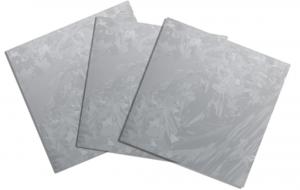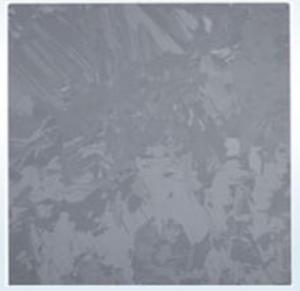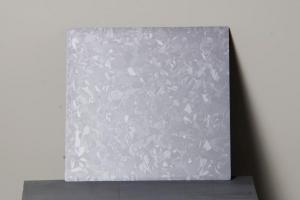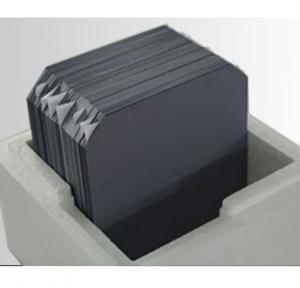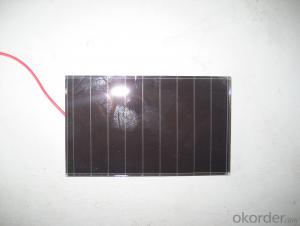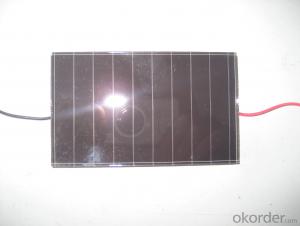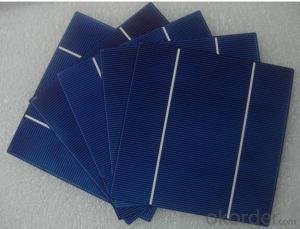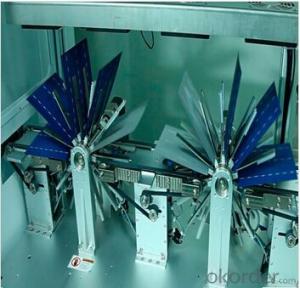Polycrystalline/ Multiple Solar Silicon Wafer156*156, Solar Wafers
- Loading Port:
- Shanghai Port
- Payment Terms:
- TT or LC
- Min Order Qty:
- 100 Pieces PCS
- Supply Capability:
- 700MW/Per Year PCS/month
OKorder Service Pledge
Quality Product, Order Online Tracking, Timely Delivery
OKorder Financial Service
Credit Rating, Credit Services, Credit Purchasing
You Might Also Like
Specifications of Polycrystalline Silicon Wafer
Format : 156 mm × 156 mm ± 0.5 mm
Thickness : 200μm ± 10 μm
| Product name | Poly Wafer |
| Conductive type | P Type |
| Square size wafer (mm) | 156×156±0.5 |
| 219.20±0.5 | |
| Corner (mm)
|
1±0.5、45°±10º |
| 200±20 | |
| Total thickness(um) | ≤40 |
| Resistivity ranges(Ωcm) | 1-3 |
| Doping elements | boron |
| Carbon content(atoms/cc) | ≤8*1017 |
| Oxygen content(atoms/cc) | ≤1*1018 |
| Lifetime(μs) | ≥2 |
| Surface quality | No crack, gap, missing Angle, perforated, window, microcrystalline |
| Warping degrees(μm) | ≤50 |
| Neighbouring vertical degree | 90±0.5° |
| Side damage(mm) | ≤0.5mm(length)×0.3mm(width),(not more than 2 per wafer) |
| Line mark(μm) | ≤15 |
Usage and Applications of Poly Wafers
Poly Solar Wafers mainly used in Poly Solar Cells, with high efficiency and reliable quality. Our Wafer can promise the 25 years life span and have passed PID test.
Packaging & Delivery of Poly Wafers
Carton Box Package and Deliver by air
Factory Picture of Poly Wafers
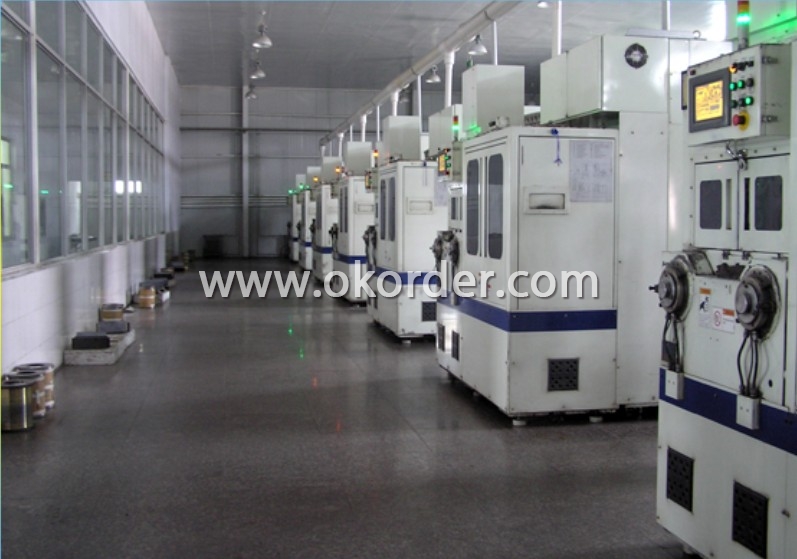
Package Picture of Poly Wafers
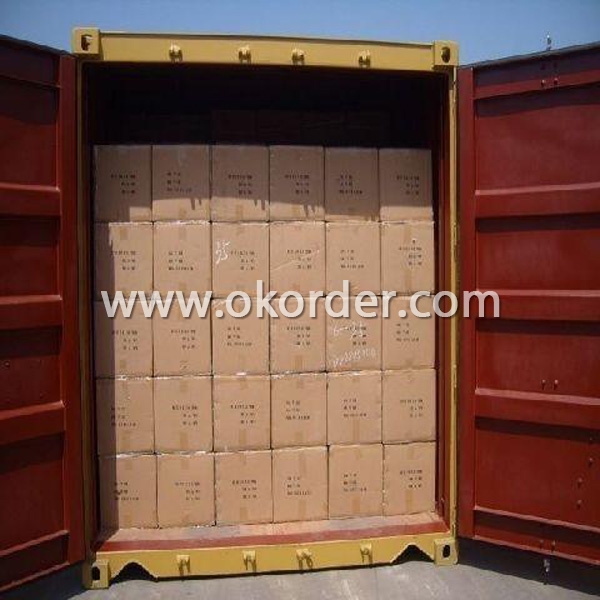
- Q:How are solar silicon wafers connected to form a solar panel?
- Solar silicon wafers are typically connected together using conductive materials, such as metal ribbons or wires, to form a solar panel. These connections, known as interconnects, are made by soldering or using conductive adhesive to attach the positive side of one wafer to the negative side of another wafer. This series of connections allows the flow of electric current between the wafers, ultimately enabling the solar panel to generate electricity from sunlight.
- Q:What is the effect of surface passivation on solar silicon wafers?
- The effect of surface passivation on solar silicon wafers is to reduce the recombination of charge carriers at the surface, thereby improving the overall efficiency of the solar cell. Surface passivation helps to minimize the loss of electrons and holes, which can significantly enhance the power output and performance of the solar cell.
- Q:How do solar silicon wafers perform in snowy conditions?
- Solar silicon wafers typically perform well in snowy conditions, although their efficiency may be slightly reduced. Snow can cover the surface of the wafers, blocking sunlight from reaching the cells and reducing power generation. However, the dark color of the wafers helps absorb some heat, causing the snow to melt and slide off. Additionally, solar panels are often installed at an angle, allowing snow to easily slide down due to gravity. Overall, while snowy conditions may temporarily affect solar panel performance, they are designed to handle such conditions and continue producing electricity.
- Q:How do solar silicon wafers contribute to reducing the reliance on imported energy?
- Solar silicon wafers contribute to reducing reliance on imported energy by providing a sustainable and renewable source of electricity generation. By harnessing the power of the sun, solar panels made from silicon wafers convert sunlight into electricity, thus reducing the need for energy imports. This enables countries to rely more on their own domestic solar energy resources, promoting energy independence and reducing the dependence on imported fossil fuels or other non-renewable energy sources.
- Q:Can solar silicon wafers be used in solar-powered transportation systems?
- Yes, solar silicon wafers can be used in solar-powered transportation systems. They are commonly used in the production of solar panels, which can be installed on vehicles to harness solar energy and power the transportation systems.
- Q:How is a front contact applied to a solar silicon wafer?
- A front contact is typically applied to a solar silicon wafer through a process known as screen printing. In this process, a conductive paste containing metal particles is applied to the front surface of the wafer using a fine mesh screen. The paste is then dried and fired at high temperatures, causing the metal particles to fuse together and form a continuous conductive layer. This front contact acts as an electrode, allowing the collection and extraction of the generated electrical current from the solar cell.
- Q:What are the advantages of using solar silicon wafers?
- There are several advantages of using solar silicon wafers. Firstly, they have excellent light absorption properties, allowing them to efficiently convert sunlight into electricity. Secondly, they are durable and have a long lifespan, with many solar panels lasting over 25 years. Additionally, silicon is abundantly available and relatively inexpensive, making it a cost-effective option for solar energy production. Furthermore, silicon wafers can be easily manufactured at large scales, making them suitable for mass production of solar panels. Lastly, solar silicon wafers are environmentally friendly as they produce clean energy, reducing carbon emissions and dependence on fossil fuels.
- Q:How do solar silicon wafers compare to other types of solar cells?
- Solar silicon wafers, which are the most commonly used material in solar cells, have several advantages over other types of solar cells. Firstly, they have a higher efficiency in converting sunlight into electricity, making them more efficient in generating power. Additionally, silicon wafers have a longer lifespan and require minimal maintenance, ensuring long-term reliability. Furthermore, they are cost-effective due to their abundance and established manufacturing processes. While other types of solar cells, such as thin-film or organic cells, may offer flexibility or lower production costs, silicon wafers remain the preferred choice for their superior performance and reliability in the solar industry.
- Q:What are the different materials used for front contacts in solar silicon wafers?
- The different materials used for front contacts in solar silicon wafers include silver, aluminum, and copper. These materials are chosen for their electrical conductivity and compatibility with the silicon wafer, allowing for efficient collection and transport of the generated solar energy.
- Q:How thick are solar silicon wafers?
- Solar silicon wafers typically have a thickness ranging from 150 to 200 micrometers (μm), which is about 0.15 to 0.2 millimeters (mm).
Our company is a world class resources and green energy developer, operator and supplier with its engagement in green energy development, integration and operation. We strives to offer highly efficient, eco-friendly, economical and reliable energy solutions through an integrated and diversified energy industrial chain. In adherence to the philosophy of bringing green power to life, the Group stays committed to continuously providing high-quality energy and services for a better living environment. Under approaches of people-oriented, excellence-foremost, value-creation and harmony-pursuant, our Group is determined to become a respected world-class green energy conglomerate.
1. Manufacturer Overview |
|
|---|---|
| Location | |
| Year Established | |
| Annual Output Value | |
| Main Markets | |
| Company Certifications | |
2. Manufacturer Certificates |
|
|---|---|
| a) Certification Name | |
| Range | |
| Reference | |
| Validity Period | |
3. Manufacturer Capability |
|
|---|---|
| a)Trade Capacity | |
| Nearest Port | |
| Export Percentage | |
| No.of Employees in Trade Department | |
| Language Spoken: | |
| b)Factory Information | |
| Factory Size: | |
| No. of Production Lines | |
| Contract Manufacturing | |
| Product Price Range | |
Send your message to us
Polycrystalline/ Multiple Solar Silicon Wafer156*156, Solar Wafers
- Loading Port:
- Shanghai Port
- Payment Terms:
- TT or LC
- Min Order Qty:
- 100 Pieces PCS
- Supply Capability:
- 700MW/Per Year PCS/month
OKorder Service Pledge
Quality Product, Order Online Tracking, Timely Delivery
OKorder Financial Service
Credit Rating, Credit Services, Credit Purchasing
Similar products
New products
Hot products
